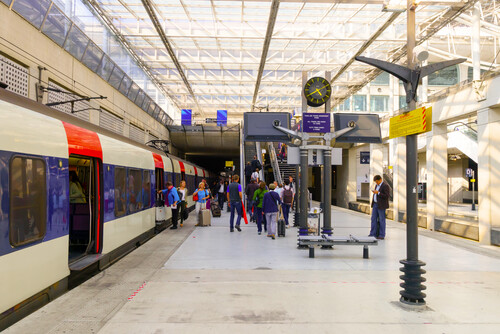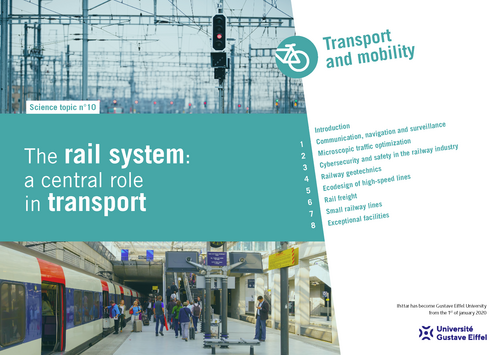The rail system: a central role in transport
Marion Berbineau, scientific coordinator of the science topic, Gustave Eiffel University
Ever since its creation, rail transport has left its mark on the different periods of contemporary history. It has often been the setting for major innovations, and it has provided increasingly fast and safe travel, both for people and goods. Nowadays, rail transport is facing new ecological, societal and digital challenges. Continued innovation requires contributions from a multiplicity of stakeholders within the railway system.
A constantly developing mode of transport
Although rail is seen as a mode of transport, it is also a powerful industry. However, the European rail industry’s global leadership is currently being challenged by the emergence of major industrial players in Asia, in China particularly. The industry in Europe therefore faces several major challenges, namely, to halve life-cycle costs, double rail capacity (the number of trains running at the same time), significantly increase reliability and punctuality, while maintaining the same level of safety and reducing time to market. To better respond to these competitive challenges, innovation is vital and must be addressed in all its complexity by involving all the stakeholders in the rail system and by mobilising a whole range of scientific disciplines and technical know-how. The autonomous train, breakthrough concepts such as Hyperloop and Clip-Air, are major innovations that will revolu-tionize the entire rail system.
A rich but complex rail system
The rail system does not only consist of trains and infrastructure. It also includes signalling, and the management of traffic and timetables, tele-communications, surveillance, maintenance, etc. More broadly, it is a complex system that includes several subsystems in which a multiplicity of public and private actors, all with their own governance systems, interact. These include manu-facturers, operators, managers, certification and homologation bodies as well as customers. Safety is the cornerstone of the rail system and it is both its strength and its weakness. The system is subject to very stringent compliance and safety demonstration methods and processes that are currently hampering innovation. Finally, the rail system, through its infrastructure and stations, is embedded in a territory which means it must be considered within the context of regional and urban planning.
An innovative research topic
The systems-based approach to the rail sector fosters exchanges between a number of organisations and universities. In the national context, the following should be mentioned: Railenium IRT, of which Gustave Eiffel University is a founding member, and SystemX IRT. At the European level, the Shift2rail public-private partnership has been set up to manage and coordinate all research and innovation activities in the field of rail transport (...)
The Gustave Eiffel University’s system approach takes into account the complexity of the territories, the guided transport, the major engineering and innovation objects that the University handles and where man plays a central role.

Photo credit : Epictura
Summary
Introduction
Navigation, communication and surveillance: essential functions for trains
More trains, fewer delays, thanks to optimal traffic management
Seeking security and safety in response to cyber attacks
Design infrastructure according to the natural soil
Ecodesign of high-speed railway lines
- By Pierre-Olivier Vandanjon, Agnès Jullien, Alex Coiret, Michel Dauvergne, Tristan Lorino
How can we improve rail freight transport
What future for small railway lines
Exceptional facilities for better understanding and for testing
Identity card of the science topic
| Title: | The railway system: a central role in transport |
| Coordinator: | Marion Berbineau |
| Authors: | Marion Berbineau, Juliette Marais, Joaquin Rodriguez, Paola Pellegrini, Grégory Marlière, Sonia Sobieraj-Richard, Pierre Hosteins, Virginie Deniau, Christophe Gransart, El Miloudi El Koursi, Christophe Chevalier, Thierry Dubreucq, Jean-Pierre Rajot, Pierre-Olivier Vandanjon, Agnès Jullien, Alex Coiret, Michel Dauvergne, Tristan Lorino, Patrick Nierat, Philippe Poinsot |
| Collection: | Ifsttar sciences topics |
| Version: | PDF for free download in web and print versions |
| Licence: | Creative Common CC BY-SA 4.0 |
| Publication: | September 2019 |
| Languages: | French and english |
| Keywords: | Train, urban transport, delivery, railway, infrastructures, Ifsttar science topics |

